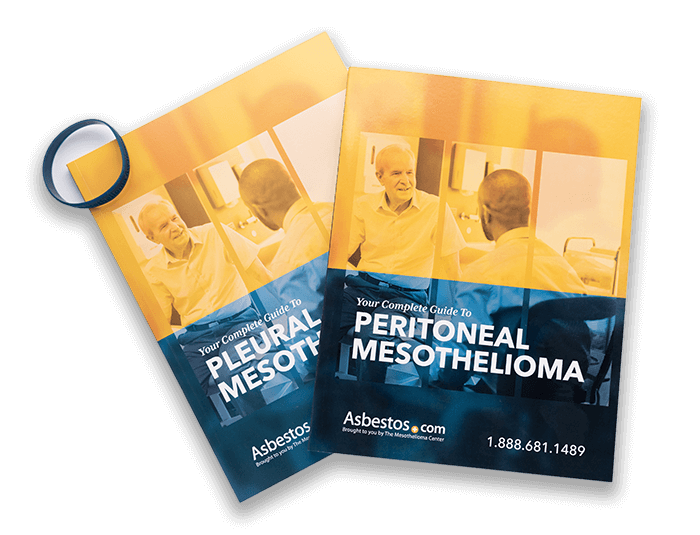Asbestos in Florida
Asbestos does not occur naturally in Florida, but the state received several large shipments. According to records, at least 109,949 tons of asbestos shipped from Libby, Montana, for processing in five Florida cities: Boca Raton, Jacksonville, Pompano Beach, St. Petersburg and Tampa. Contaminated products were frequently present in construction and commercial industries.

Written by Matt Mauney | Scientifically Reviewed By Arti Shukla, Ph.D. | Edited By Walter Pacheco | Last Update: July 16, 2024
Asbestos Exposure in Florida
Hundreds of Florida buildings harbor asbestos-containing materials (ACM). As long as they are not damaged or disturbed, they are considered nearly harmless. However, many business and property owners in the state have taken steps to remove the asbestos material from their buildings out of fear of harm to the public. The number of asbestos lawsuits filed (and won) in Florida is also a motivator to prevent harmful exposure. Others have left the materials in place. Instead, they’ve developed awareness and management programs. These programs help to manage the asbestos at these facilities.
In May 2021, employees of Palm Beach County Sheriff’s Office protested outside the sheriff’s office. They demanded temporary relocation of 911 dispatchers during an asbestos removal project. County officials said the removal project followed all safety measures required by law to protect workers from exposure. Dust samples revealed no asbestos contamination outside the removal area.
Florida’s Occupations and Areas at Risk
Five asbestos processing plants previously operated throughout the state. Other industries such as construction and mining used asbestos extensively in the workplace. Those with jobs at shipyards, power plants, chemical plants, metal works factories and auto repair shops were likely to encounter asbestos in the workplace. Occupations in schools, electrical work, plumbing and home repair also present a risk of exposure.
Some known locations where exposure was a risk include:
- Big Bear Powerhouse
- Crist Power Plant
- DuPont Corp. (Forest Wheeler)
- Eustis Housing Project
- Jacksonville Grammar School
- Mulberry Phosphate Mine
- St. Lucie Nuclear Power Plant
- U.S. Sugar and Vero Beach Municipal Power Plant
The National Aeronautics and Space Administration (NASA), nestled in Florida’s central East Coast, has also used asbestos. The material was particularly useful for fireproofing purposes on the space shuttle. Technical reports released by NASA indicate that asbestos blocks have been used as soldering bases. Asbestos composites have also been used in pressurized vessels.
Many public buildings contain asbestos. Florida laws and regulations are in place to help prevent exposure and make the right entities responsible for containing or abating the materials. For example, Florida State University (FSU) has identified several buildings that house asbestos-containing material. FSU manages the materials under the guidance of the Environmental Protection Agency (EPA).
The university’s Asbestos Awareness and Management Program is responsible for the following activities:
- An inventory of known asbestos-containing materials
- Coordination of asbestos abatement activities
- Notification of building occupants
- Periodic surveillance of ACM
- Training of maintenance and custodial staff and any other employee required to work with or near ACM
This is just one example of the effort put forth by facilities in the state. The state has made great efforts to monitor and manage known asbestos sites by implementing a special program.

Learn about your diagnosis, top doctors and how to pay for treatment.
Get Your Free GuideFlorida Department of Environmental Protection (DEP) Asbestos Removal Program
The intent of the Florida DEP Asbestos Removal Program is to prevent the release of fibers into the outside air during renovation and demolition activities. The program began in 1982 when the EPA delegated enforcement authority to the state.
The program requires notification to the Florida DEP about removing asbestos from certain types of facilities throughout Florida that potentially contain contaminated materials. These include institutional, commercial, public, and industrial structures and residential buildings with four or more units; as well as ships or any active or inactive waste disposal sites.
Jobsites / Shipyards with Known Asbestos Exposure
- Atlantic Dry Dock
- The Hendry Corporation
- Offshore Shipbuilding Co.
- Tampa Bay Shipbuilding
- Gulf Marine Repair Corporation
- Mayport Navy Station
- Pensacola Naval Air Station
Penalties for Violating Removal Laws
It doesn’t take much to earn the label “asbestos-containing.” In Florida and across the country, all forms of asbestos (even in small amounts) are considered dangerous. Asbestos-containing materials refer to any materials that contain more than 1% asbestos. Florida has set laws to regulate the removal of such materials, with some hefty penalties for violating these laws.
The Department of Environmental Protection sets non-compliance fees high. Currently, financial penalties are the only punishments for skirting the law. If an individual or individuals are harmed during the removal of asbestos from any site in Florida, filing a lawsuit is the only recourse. Financial penalties are assessed for failure to comply with notification laws, waste shipment violations, and work-practice and emission violations. Penalties depend on the specific type of violation and whether it’s the first, second, or third violation, and range from $500 up to $10,000.
Florida residents don’t have to be concerned about environmental sources of asbestos. The mineral does not occur naturally in the Sunshine State. However, exposure through contaminated products is possible. Becoming informed about preventing exposure is the best approach to avoid contact with the toxic mineral.
This Page Contains 9 Cited Articles
The sources on all content featured in The Mesothelioma Center at Asbestos.com include medical and scientific studies, peer-reviewed studies and other research documents from reputable organizations.
- Morse, H. (2021, May 27). County: No risk of asbestos exposure for 911 dispatchers inside PBSO headquarters renovation. Retrieved from https://www.palmbeachpost.com/story/news/local/2021/05/27/palm-beach-county-no-risk-asbestos-exposure-911-dispatchers-pbso-headquarters/7467376002/
- Environmental Working Group. (2011). Government Statistics on Deaths Due to Asbestos-Related Diseases. https://web.archive.org/web/20200809211518/http://www.ewg.org/research/maps/deaths-due-asbestos-related-diseases
- Sylvester Comprehensive Cancer Center. (2011). Sylvester First in South Florida to Offer Novel Treatment for Abdominal Cancer. https://umiamihealth.org/sylvester-comprehensive-cancer-center/lp/news
- Florida Department of Environmental Protection. (2011). Emission Sources: Asbestos. http://www.dep.state.fl.us/air/emission/asbestos.htm
- NASA. (2011). Asbestos Abatement. http://specsintact.ksc.nasa.gov/Masters/KSCMaster/pdf/02%2082%2013.00%2098.pdf
- Florida State University. (2011). Asbestos Awareness and Management Program. http://www.safety.fsu.edu/asbestosmanagement.html
- Florida Department of Environmental Protection. (2011). About Air: Asbestos. http://www.dep.state.fl.us/air/about_air/pollutants/asbestos.htm
- Florida Business Department and Professional Services. (n.d.). Asbestos Licensing Unit. https://www.myfloridalicense.com/intentions2.asp?chBoard=true&boardid=59&SID=
- Centers for Disease Control and Prevention, National Center for Health Statistics. (2011). Underlying Cause of Death 1999-2008 [Data file]. Retrieved from CDC WONDER Online Database. http://wonder.cdc.gov/ucd-icd10.html







